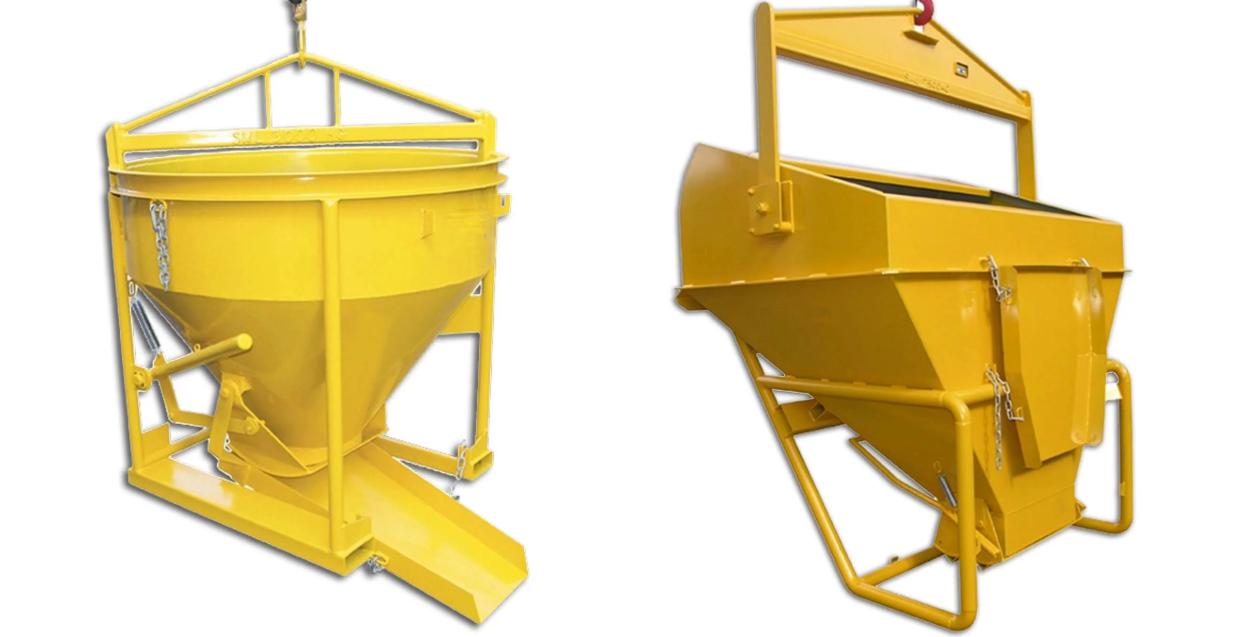What Is A Cement Kibble And Why Is It Essential For Construction Projects?

Construction projects need special equipment to keep things running smoothly and safely. One such critical tool is the cement kibble, an indispensable asset on modern construction sites.
Designed for lifting and pouring concrete with precision, kibbles play a key role in making concrete handling smoother and more manageable. Let’s explore what a cement transfer kibble is, how it works, and why it’s essential for construction projects.
What Is a Cement Kibble?
A kibble is a sturdy, bucket-like container used to transport and distribute concrete on construction sites. It is specifically engineered to handle heavy loads of wet concrete, ensuring that the material is delivered where it’s needed without spillage or waste.
These containers are often attached to cranes, forklifts, or hoists, enabling precise placement of concrete, even in hard-to-reach areas. Kibbles come in various sizes and designs, including bottom-discharging and side-discharging models, to suit different project needs.
How Does a Cement Kibble Work?
Kibbles are designed for ease of use and functionality. The process begins with filling the kibble with wet concrete from a mixer or batch plant. Once filled, the kibble is lifted using construction equipment like a crane or forklift.
Operators can then position the kibble over the target area, such as formwork, columns, or slabs. The discharge mechanism—either a lever-operated chute or a valve—allows for controlled pouring, minimizing mess and ensuring precision.
Why Are Cement Kibbles Essential for Construction Projects?
Here are some points stating the importance of using kibble in construction projects.
1. Efficiency in Concrete Handling
Moving large quantities of wet concrete manually is time-consuming and labor-intensive. Kibbles streamline the process by enabling quick and easy transportation, allowing workers to focus on other critical tasks.
2. Precision Placement
Accurate concrete placement is crucial for structural integrity. Kibbles ensure that concrete is poured exactly where it is needed, reducing errors and the need for rework.
3. Safety on Construction Sites
Handling wet concrete can be hazardous, particularly in high-rise projects or confined spaces. Kibbles reduce the risks associated with manual transportation and pouring by keeping workers at a safe distance from heavy loads.
4. Versatility Across Projects
Whether it’s a residential building, a commercial structure, or infrastructure development, kibbles are versatile enough to handle various construction scenarios. Their different sizes and configurations cater to diverse project requirements.
Tips for Using Cement Kibbles Effectively
Here are some tips when using a kibble for transferring cement:
- Select a kibble that matches your project’s scale and the required concrete volume.
- Check for signs of wear and tear to ensure safety and efficiency.
- Proper training ensures that workers can handle kibbles safely and effectively.
- Pair the kibble with the right lifting equipment to maximize its functionality.
Conclusion
Cement kibbles are a vital component of any construction project, offering efficiency, precision, and safety. By simplifying the transportation and placement of concrete, they help streamline workflows and maintain high standards of quality.
For builders and contractors, investing in reliable kibbles is an essential step toward successful project completion.
Copyright © Rain Stone LLC All Rights Reserved